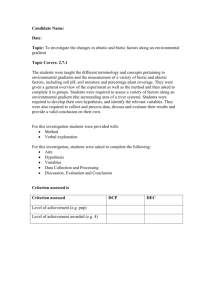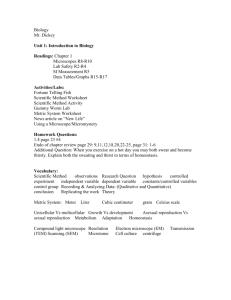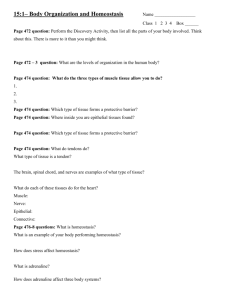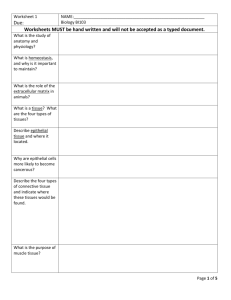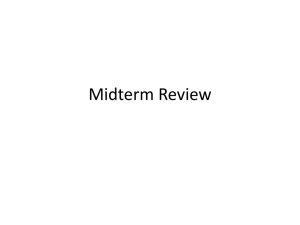Unit 9
advertisement
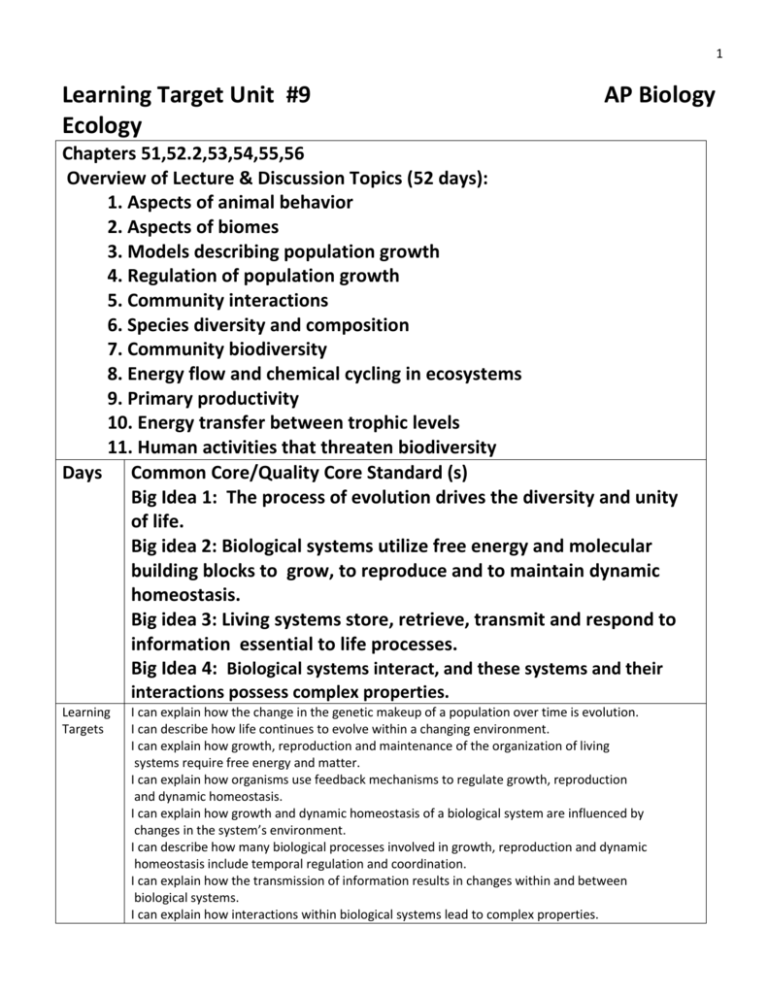
1 Learning Target Unit #9 Ecology AP Biology Chapters 51,52.2,53,54,55,56 Overview of Lecture & Discussion Topics (52 days): 1. Aspects of animal behavior 2. Aspects of biomes 3. Models describing population growth 4. Regulation of population growth 5. Community interactions 6. Species diversity and composition 7. Community biodiversity 8. Energy flow and chemical cycling in ecosystems 9. Primary productivity 10. Energy transfer between trophic levels 11. Human activities that threaten biodiversity Days Common Core/Quality Core Standard (s) Big Idea 1: The process of evolution drives the diversity and unity of life. Big idea 2: Biological systems utilize free energy and molecular building blocks to grow, to reproduce and to maintain dynamic homeostasis. Big idea 3: Living systems store, retrieve, transmit and respond to information essential to life processes. Big Idea 4: Biological systems interact, and these systems and their interactions possess complex properties. Learning Targets I can explain how the change in the genetic makeup of a population over time is evolution. I can describe how life continues to evolve within a changing environment. I can explain how growth, reproduction and maintenance of the organization of living systems require free energy and matter. I can explain how organisms use feedback mechanisms to regulate growth, reproduction and dynamic homeostasis. I can explain how growth and dynamic homeostasis of a biological system are influenced by changes in the system’s environment. I can describe how many biological processes involved in growth, reproduction and dynamic homeostasis include temporal regulation and coordination. I can explain how the transmission of information results in changes within and between biological systems. I can explain how interactions within biological systems lead to complex properties. 2 I can explain why competition and cooperation are important aspects of biological systems. I can explain how naturally occurring diversity among and between components within biological systems affects interactions with the environment. Activities 1.Animated investigation: How Does the Fungus Pilobolus Succeed as a Decomposer? From: <www.campbellbiology.com>, Chapter 31. Students investigate this fungus as a decomposer, hypothesizing and collecting data in this animated investigation; they will study the adaptiveness of certain spore dispersal methods. (Connects big idea 4 to enduring understanding 1.A; SP 5, 6, 7) [CR4d] 2. Animated Investigation: How do Abiotic Factors Affect Distribution of Organisms? From: <www.campbellbiology.com>, Chapter 52. Students will use a simple model for observing ecological impact that occurs when single abiotic factors are changes. By changing abiotic factors, data can be collected and analyzed. (Connection of big idea 2 to enduring understanding 4.A) [CR4d] LABS 1. Fruit Fly Behavior Lab. Students design their own controlled experiments to investigate a question they have about animal behavior (kinesis and taxis in isopods, fruit fly behavior with respect to selected stimuli). The entire laboratory and experimental design and analysis will be written in the laboratory research notebook. (Supports big idea 4; SP 1, 2, 3, 4, 5, 6, 7) [CR6] & [CR8] 2. Dissolved Oxygen and Primary Productivity. Through guided inquiry, students will investigate how to measure dissolved oxygen using the Winkler method (ex: How does temperature affect the dissolved oxygen concentration in samples of water?) Continuing, students will explore respiration and photosynthesis processes in samples of a Chlorella culture as they study gross and net primary productivity. Students will then be challenged to write and conduct a controlled experiment to test the effect of a variable on primary productivity. The study will involve hypothesizing, designing the experiment, data collection of dissolved oxygen concentrations, calculations of primary productivity, graphing and making a conclusion. The entire laboratory investigation will be written in the laboratory research notebook. (Supports big idea 4; SP 1, 2, 3, 4, 5, 6, 7) [CR6]

